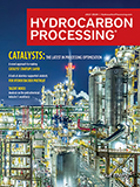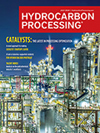Australia's Woodside eyes floating technology
By STEPHEN BELL
PERTH -- Woodside Petroleum said it wants to develop a huge natural gas field offshore Australia using a vessel that can process gas at sea, in a potentially cheaper but risky move as the technology has yet to be deployed anywhere in the world.
It comes after Woodside and partners scrapped an earlier plan to process gas from the Browse field at an onshore facility at James Price Point in Western Australia, citing high development costs at a time when competition with North American gas producers is intensifying.
Floating liquefied natural gas (FLNG) technology is being pioneered by energy companies to develop gas fields too small or remote to justify the use of conventional pipelines and onshore facilities. Companies also claim FLNG is better for the environment because it doesn't require the stripping of land on the coast or dredging to create a port for tankers.
But the technology, which relies on huge floating vessels, some as long as five football fields, is untried on a commercial scale. The processing and offloading platforms will be moored to the seabed and face technical risks, including withstanding stormy seas and regular cyclones off Australia's northwest coastline.
Woodside is recommending FLNG technology developed by Royal Dutch Shell, which is building a separate platform for its Prelude project, also located offshore north western Australia. Shell is the second largest shareholder in Browse, which contains an estimated 15.5 Tcf of natural gas.
Separately, Exxon Mobil is investigating whether to use its own FLNG technology to develop the Scarborough gas field offshore Western Australia, which was discovered decades ago but remains untapped due to its remote location.
Earlier this year, Woodside said a land based facility for Browse was too expensive, overcoming the objections of political leaders who hoped it would create jobs in remote communities. Analysts had estimated the cost of building the facility at James Price Point had blown out to more than $40 billion amid a slew of cost overruns at other big Australian mining and gas projects.
Due to be built in a place marked with one of the world's longest chain of dinosaur footprints, the project faced staunch opposition from environmental groups and angered some traditional land owners.
After spending four months studying alternatives, including a pipeline to existing onshore plants, Woodside said it would recommend FLNG to its partners in Browse.
"Through this review, a compelling case has emerged for FLNG as the best option for early commercialization of the world class Browse resource, Woodside CEO Peter Coleman said in a statement."
The selection of FLNG now requires the approval of Woodside's Browse partners before progressing through to early design work for a development that may be still two years away from a final investment decision.
"We believe Shell's FLNG technology is the fastest, most economic and the best technical solution available for Browse, said Andrew Smith, Shell's top official in Australia."
Australia has long harbored ambitions of becoming the major LNG supply hub for Asia and has over a dozen projects either under construction or on the drawing board. The seven terminals currently being built should allow Australia to leapfrog Qatar as the world's biggest LNG exporter by 2018.
Woodside's recommendation for Browse comes just days after ExxonMobil released an updated environmental report for its Scarborough project.
Exxon, which unveiled its FLNG proposal in April, said it may begin early design work this year for a 495 m long platform that would process 6-7 MMtpy of LNG.
Subject to approvals, the United States company aims to make a final investment decision in 2014-2015, with first production from 2020.
Chevron, meanwhile, is pushing ahead with onshore facilities for its Gorgon and Wheatstone gas export projects, among Australia's biggest.
The company has been at the sharp edge of Australia cost increases, revealing in December a 21% cost overrun at Gorgon to $48.4 billion. Wheatstone, which is at an earlier stage of construction, remains within its $29 billion budget.
Dow Jones Newswires






Comments